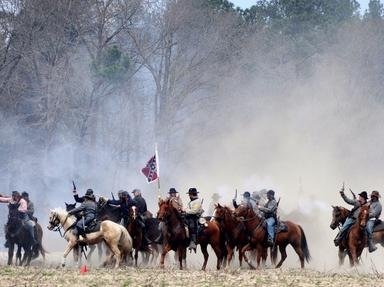Quiz Answer Key and Fun Facts
1. Battle of Shiloh 1862
2. Battle of Second Bull Run 1862
3. Battle of Perryville 1862
4. Battle of Franklin 1864
5. Battle of Gettysburg 1863
6. Battle of Pea Ridge 1862
7. First Battle of Bull Run 1861
8. Battle of Antietam 1862
9. Battle of Bentonville 1865
10. Siege of Vicksburg 1863
11. Battle of Fredericksburg 1862
12. Battle of Stones River 1862-1863
13. Battle of Chancellorsville 1863
14. Battle of Nashville 1864
15. Battle of Fair Oaks 1862
Source: Author
Reamar42
This quiz was reviewed by FunTrivia editor
ponycargirl before going online.
Any errors found in FunTrivia content are routinely corrected through our feedback system.
